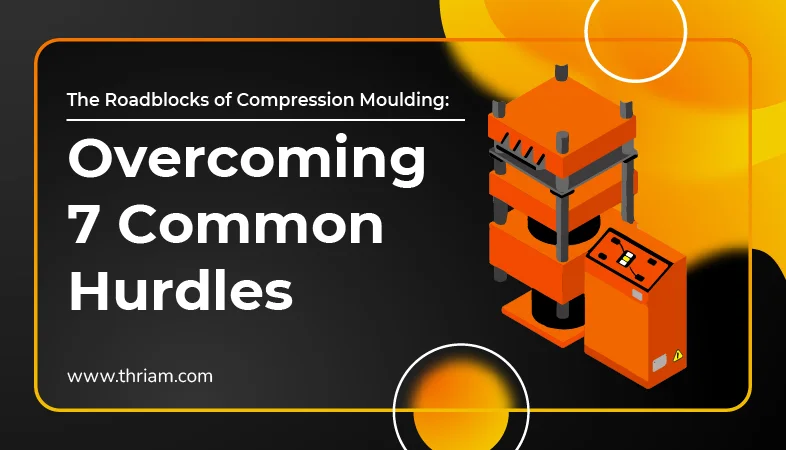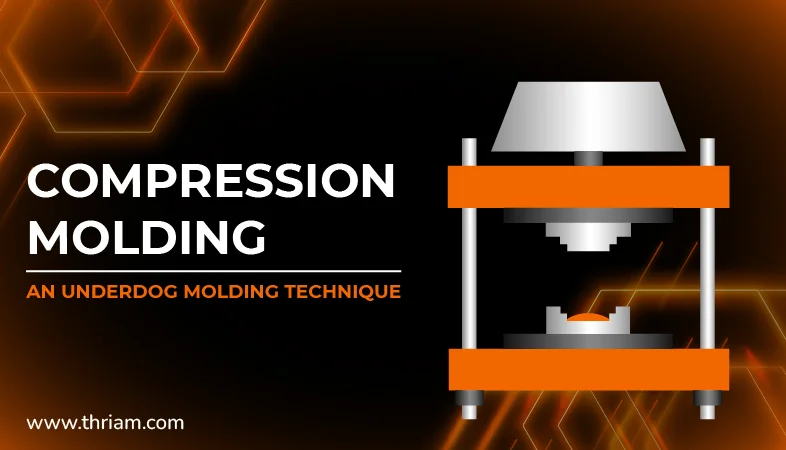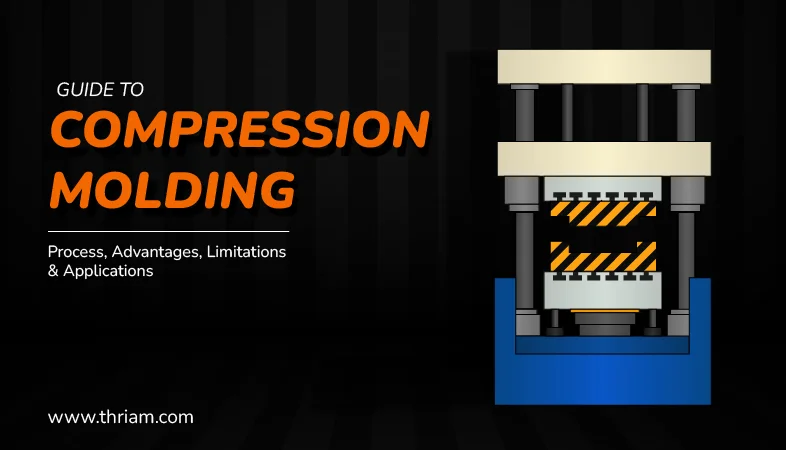Compression Molding in the Electric Vehicle (EV) Industry Applications and Opportunities
-industry-applications-and-opportunities/compression-molding-in-the-electric-vehicle-(ev)-industry-applications-and-opportunities.webp)
The electric vehicle (EV) revolution is transforming the automotive landscape, driven by growing environmental concerns and advancements in battery technology. This shift has created new demands for lightweight, durable, and cost-effective components, opening up significant opportunities for compression molding. This comprehensive blog post explores the diverse applications of compression molding in the EV industry, highlighting its advantages and the exciting opportunities it presents.
The Rise of EVs and the Need for Innovative Manufacturing
The transition to EVs presents unique engineering challenges. Key priorities include:
- Lightweighting:Reducing vehicle weight is crucial for improving energy efficiency and range.
- Battery Safety and Performance:Protecting the battery pack from impact, thermal runaway, and environmental factors is paramount.
- Cost-Effectiveness:Manufacturing processes must be scalable and cost-effective to make EVs accessible to a wider market.
- Sustainability:Using recyclable and sustainable materials is becoming increasingly important.
Compression molding is well-positioned to address these challenges, offering a versatile and cost-effective solution for producing various EV components.
Understanding Compression Molding
Before delving into specific applications, let's briefly recap the compression molding process. It involves placing a preheated molding material (often a preform or charge) into an open, heated mold cavity. The mold is then closed, and pressure is applied to force the material to fill the cavity. Heat and pressure are maintained for a specific curing time, allowing the material to solidify. Finally, the mold is opened, and the finished part is ejected.
Advantages of Compression Molding for EV Applications:
-industry-applications-and-opportunities/advantages-of-compression-molding-for-ev-applications.webp)
- Lightweighting:Compression molding allows for the use of fiber-reinforced composites (e.g., glass fiber, carbon fiber) and lightweight thermosets, which significantly reduce component weight compared to traditional metals.
- High Strength and Stiffness:Composites offer excellent strength-to-weight ratios, making them ideal for structural components that need to withstand high loads and impacts.
- Design Flexibility:Compression molding can produce complex shapes and geometries, allowing for the integration of multiple functions into a single part.
- Cost-Effectiveness for High-Volume Production:While tooling costs can be higher upfront, compression molding becomes highly cost-effective for medium to high-volume production runs.
- Excellent Surface Finish:Compression molding can produce parts with smooth, high-quality surface finishes, reducing the need for secondary finishing operations.
- Integration of Inserts and Features:Inserts, such as metal fasteners or electrical connectors, can be molded directly into the part during the compression molding process.
- Suitability for Large Parts:Compression molding is well-suited for producing large, complex parts, such as battery housings and structural components
Key Applications of Compression Molding in EVs:
- Battery Housings and Enclosures:
- Challenge:Protecting the battery pack from impact, thermal runaway, and environmental factors is crucial.
- Solution:Compression molded composite battery housings offer excellent impact resistance, thermal insulation, and lightweighting benefits. They can also be designed to incorporate features like cooling channels and mounting points for battery modules.
- Materials:Sheet Molding Compound (SMC), Bulk Molding Compound (BMC), and long fiber thermoplastic (LFT) composites are commonly used.
- Structural Components:
- Challenge:Reducing vehicle weight while maintaining structural integrity is essential for improving range and performance.
- Solution:Compression molded composite structural components, such as floor panels, cross members, and chassis components, offer significant weight savings compared to steel or aluminum.
- Materials:Carbon fiber reinforced polymers (CFRP) and glass fiber reinforced polymers (GFRP) are used for high-strength applications.
- Interior Components:
- Challenge:Creating lightweight and aesthetically pleasing interior components.
- Solution:Compression molding can be used to produce interior panels, door panels, and other components with complex shapes and textures.
- Materials:Thermoset composites and thermoplastic composites can be used, depending on the specific requirements.
- Exterior Body Panels and Components:
- Challenge:Achieving lightweighting and aerodynamic performance.
- Solution:Compression molded composite exterior panels, such as hoods, roofs, and spoilers, can reduce weight and improve aerodynamic efficiency.
- Materials:Glass fiber and carbon fiber composites are used for exterior applications.
- Underbody Protection:
- Challenge:Protecting the battery pack and other sensitive components from road debris and impacts.
- Solution:Compression molded composite underbody shields offer excellent impact resistance and protection.
- Materials:Glass fiber reinforced composites are commonly used for underbody protection.
- Electrical Components:
- Challenge:Providing electrical insulation and protection for high-voltage components.
- Solution:Compression molded thermoset components can provide excellent electrical insulation and protection.
- Materials:Thermoset compounds with high dielectric strength are used for electrical applications.
- Opportunities and Future Trends:
- Increased Use of Carbon Fiber Composites:While currently more expensive, the decreasing cost of carbon fiber is expected to drive its increased use in compression molded EV components, particularly for high-performance vehicles.
- Development of New Materials:Research is ongoing to develop new composite materials with improved properties, such as higher strength, better impact resistance, and enhanced recyclability.
- Integration of Sensors and Electronics:Compression molding offers the potential to integrate sensors and electronics directly into composite components, enabling smart functionalities and improved performance monitoring.
- Advanced Manufacturing Techniques:The adoption of advanced manufacturing techniques, such as automated preforming and robotic handling, will further improve the efficiency and cost-effectiveness of compression molding for EV applications.
- Focus on Sustainability and Recyclability:The EV industry is increasingly focused on sustainability. Research into recyclable thermoset and thermoplastic composites will be crucial for the future of compression molding in this sector.
Case Study Example (Hypothetical):
Let's imagine a case study where a car manufacturer needed a lightweight, yet robust battery housing for their new EV model. They opted for a compression molded SMC (Sheet Molding Compound) housing. The benefits included:
- Significant weight reduction:Compared to a steel housing, the SMC version was significantly lighter, contributing to improved vehicle range.
- Integrated design:The housing was designed with integrated cooling channels, simplifying assembly and improving thermal management of the battery pack.
- Cost-effectiveness:For the planned production volume, compression molding proved to be a more cost-effective solution than other manufacturing methods.
- Impact resistance:The SMC material provided excellent impact resistance, protecting the battery pack from potential damage.
Conclusion
Compression molding is playing a crucial role in the development and manufacturing of electric vehicles. Its ability to produce lightweight, strong, and cost-effective components makes it an ideal manufacturing process for various EV applications, from battery housings and structural components to interior and exterior panels. As the EV market continues to grow, compression molding is poised to become even more important, driving innovation and contributing to the future of sustainable transportation. The ongoing development of new materials, advanced manufacturing techniques, and a focus on sustainability will further solidify the position of compression molding in the EV industry. This presents significant opportunities for compression molding businesses to partner with EV manufacturers and contribute to this exciting technological revolution.



